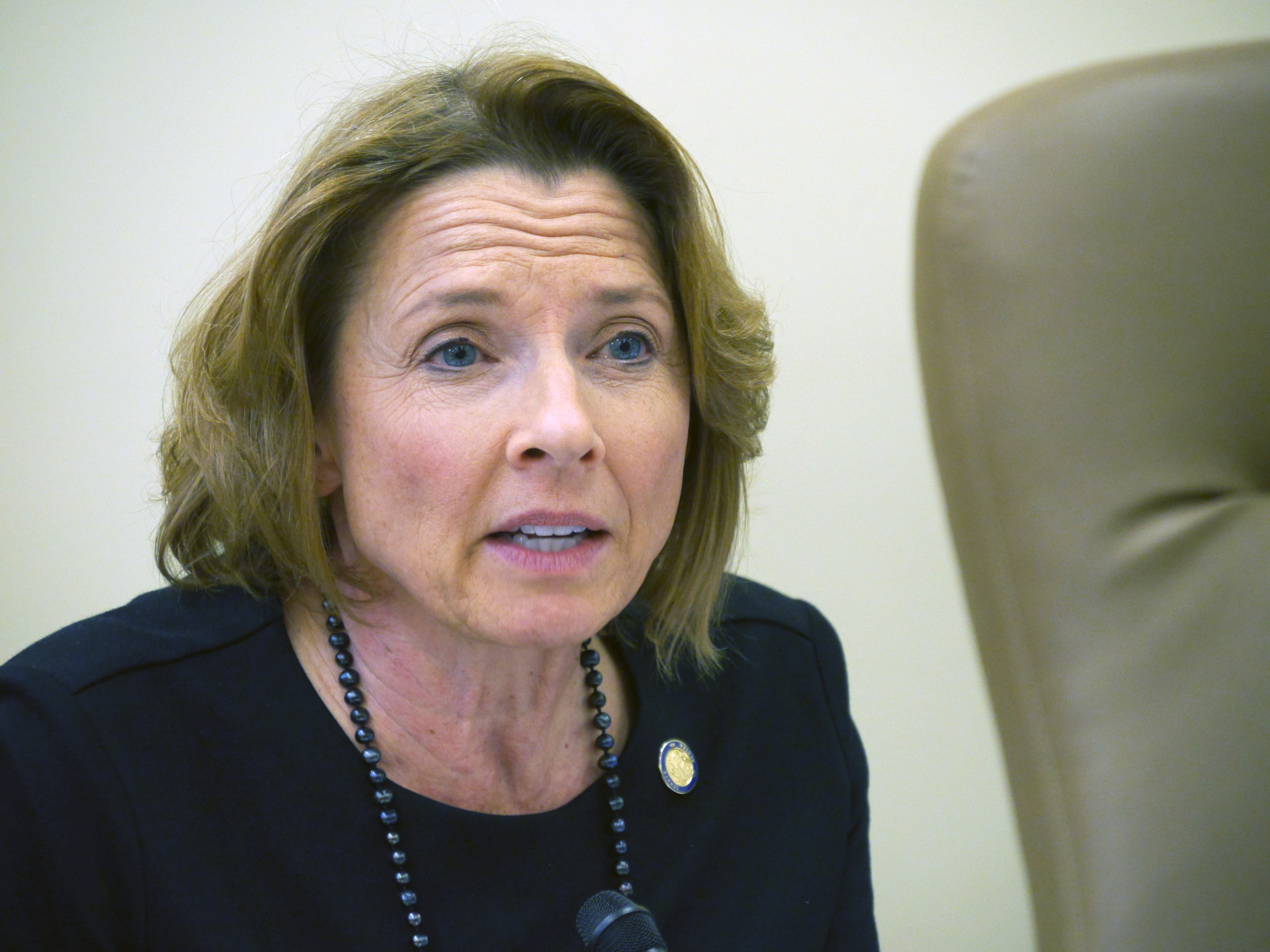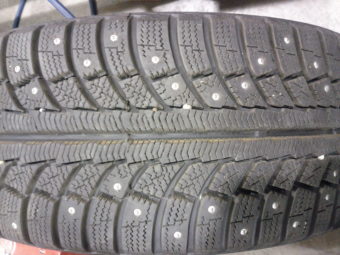
A proposed bill would increase the fee Alaskans pay to the state when they buy studded tires by 1,500 percent.
The rutted lanes on the Glenn Highway in Anchorage’s Eagle River section have helped prompt the new legislation.
Anchorage Republican Senator Cathy Giessel drives on the highway each week to pick up her grandchildren.
“The deep ruts there are a significant safety hazard,” Giessel said. “Cars get stuck in them during the winter trying to change lanes, lose control. In the summer they fill with water, increasing the chance of hydroplaning and, again, losing control.”
Giessel has identified studded tires as at least partially the culprit in causing the ruts.
She’s introduced Senate Bill 50, which would increase the state fee for studded tires from $5 per tire to $75 per tire. That’s on top of a $2.50 fee for all new tires.
She said the money will help pay for road repairs, which can cost $1 million per mile on a two-lane highway. She sees it as a kind of user fee for drivers.
“They can choose studded tires or the new technology tires,” Giessel said. “But if they’re going to choose studded tires – which do result in the rutting of the roads, the damage to the roads, then we need to have some way to repair those roads, for everyone’s safety.”
State records show about 50,000 studded tires were purchased or commercially installed in 2015.

Alaska Department of Transportation and Public Facilities spokeswoman Shannon McCarthy said studded tires do cause more damage than winter tires that don’t have studs.
“The very fact that they’re designed with a metal pin – that does … take a chip out of the surface that they’re driving in,” McCarthy said.
McCarthy noted other things damage pavement, include vehicles’ weight. That’s why the state puts weight restrictions on roads when the ground is thawing.
Alaska also limits use of studded tires, from Sept. 15 through April 30 north of the 60th parallel and from October 1 to April 15 south of the 60th parallel.
The Department recently started a research project with the University of Alaska Anchorage to look at the impact of studded tires in Alaska.
Giessel said she’s had a positive experience with non-studded winter tires making the drive to her house in Anchorage’s Hillside neighborhood.
“We have a very steep and actually slightly curving driveway, so it’s a very low-velocity climb,” Giessel said. “And, boy, that new-technology tire climbed right up on slippery days. I was very impressed.”
A Washington state study found that studded tires perform slightly better in starts and stops than nonstudded tires on smooth ice. But nonstudded tires otherwise perform equal to or better than studded tires in winter driving conditions.
Giessel is looking forward to hearings on the bill. She said she’s started to hear reactions from tire sellers.
“It’s been mixed,” Giesell said. “There are folks that sell tires that say, ‘Yeah, you’re right, these are the best thing.’ There’s other folks that say, ‘If you take away studded tire – If you put this kind of fee on studded tires, I’ll lose a lot of business, because I sell studded tires.’ ”
A hearing date for the bill in the Senate Transportation Committee hasn’t been announced.
Andrew Kitchenman is the state government and politics reporter for Alaska Public Media and KTOO in Juneau. Reach him at akitchenman@alaskapublic.org.




